Archaeological Exploration of Animals on the Qinghai-Tibet Plateau | Lecture Newsletter

Title: Animal Archaeological Exploration of the Qinghai-Tibet Plateau
Speaker: Zhang Zhengwei, Assistant Research Fellow (Center for Archaeological Science, Sichuan University)
Discussant: Mao Kangshan, Professor (College of Life Sciences, Sichuan University)
About the Speaker: Zhang Zhengwei is an Assistant Research Fellow at the Center for Archaeological Science, Sichuan University, and the head of the Animal Archaeology Laboratory at the National Archaeological Experimental Teaching Demonstration Center. He focuses on the Qinghai-Tibet Plateau and the mountainous areas of southwestern China. By comprehensively using zooarcheology, stable isotopes, and ethnoarchaeological methods, he mainly explores the hunting strategies of ancient people in the region, the origin and development of pastoral economies, the domestication of characteristic livestock/poultry, and the use of animals in cultural rituals by ancient people. In recent years, he has published more than ten research papers in related fields as the first author or co-author, and has presided over one National Social Science Fund Youth Project of China and jointly presided over one National Science Foundation (NSF) doctoral project of the United States.
Time: 15:00-17:00, January 19, 2024
Location: Conference Room, 1st Floor, Hongwa, Tibetan Studies Institute, Wangjiang Campus, Sichuan University
Lecture Communication | Summary of the Lecture "Animal Archaeological Exploration of the Qinghai-Tibet Plateau"
On the afternoon of January 22, 2024, the 11th issue of the "Archaeological Science Forum" hosted by the Center for Archaeological Science, Sichuan University, was successfully held in the First Conference Room of the China Tibetan Studies Institute, Wangjiang Campus, Sichuan University. Zhang Zhengwei, Assistant Research Fellow at the Center for Archaeological Science, Sichuan University, gave a lecture on "Animal Archaeological Exploration of the Qinghai-Tibet Plateau", which was hosted by Yuan Haibing, Associate Professor at the Center for Archaeological Science, Sichuan University, and commented on by Mao Kangshan, Professor at the College of Life Sciences, Sichuan University.
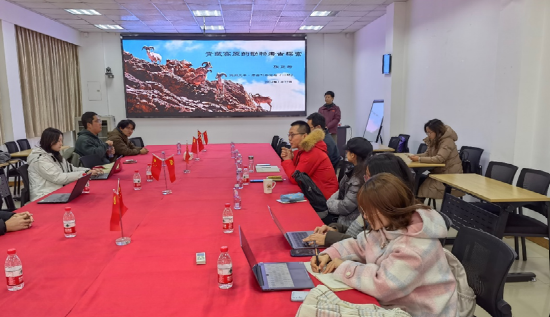
The high-altitude and hypoxic environment of the Qinghai-Tibet Plateau brings great pressure to the survival of humans, animals, and plants. However, archaeological discoveries and research show that humans have lived on the Qinghai-Tibet Plateau for at least 160,000 years, and the colonization of high-altitude areas above 4,000 meters above sea level began as early as 40,000 years ago. So how did ancient people adapt to the Qinghai-Tibet Plateau? The speaker therefore raised two questions for his exploration: How did animals help ancient people adapt to the Qinghai-Tibet Plateau? How did ancient people help animals adapt to the Qinghai-Tibet Plateau?
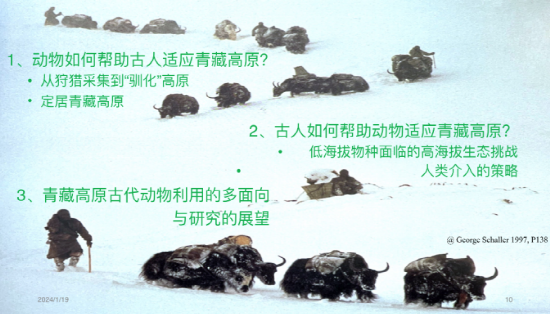
In order to explore these questions, the speaker first focused on the eastern region of the plateau, which has abundant animal archaeological data. The two most important prehistoric sites, the Karuo Site in Qamdo and the Xiao'enda Site, are both located in the Hengduan Mountains in eastern Qinghai-Tibet Plateau, belonging to the Lancang River Basin, and their geographical locations, ages, and cultural features are relatively similar. Among them, the materials from the Karuo Site were published earlier. Due to the research on animal remains being in its initial stage, the available materials and information are limited, so the understanding of the utilization of animal resources by Karuo residents is still relatively vague.
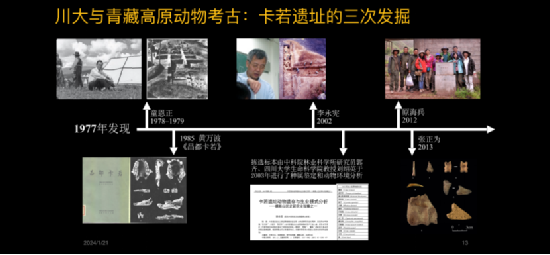
The Xiao'enda Site, adjacent to Karuo, provides better materials for understanding the prehistoric livelihoods in eastern Tibet. Animal archaeological research shows that the site mainly relied on wild animal resources. The animal bones found at the site have been identified as mainly wild musk deer and roe deer. The study did not find any signs that the site's inhabitants selectively transported certain specific parts back after hunting, so they adopted a local hunting survival strategy, tending to hunt near their settlements. Studies of the ancient environment show that the surrounding geomorphology of the Xiao'enda Site at that time had large vertical differentiation and abundant wild animal resources, making this survival strategy sustainable. Other sites in eastern Qinghai-Tibet Plateau show hunting livelihood patterns to varying degrees, which may reveal the prevalence of prehistoric hunting livelihoods in eastern Qinghai-Tibet Plateau. Due to the ecological differences in the area, survival strategies are bound to show diversity. Quantitative analysis also found that there are differences in the quantity, balance, and preferred species used at different sites. These differences continue to this day and can still be seen in ethnographic materials. In addition, the speaker also tried to explore the seasonality of site use by observing and analyzing seasonal indicators of animal bone growth in samples and seasonal migration phenomena to analyze the seasonality of hunting behavior and site occupation.
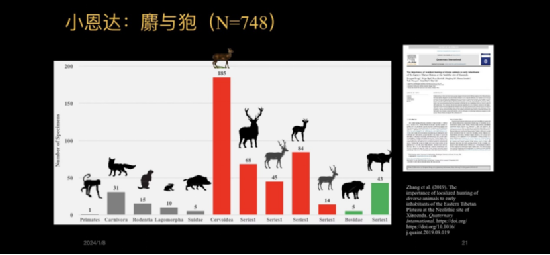
Next, in order to fully observe the adaptation strategies of the plateau's ancestors, the speaker shifted the focus to a slightly later period. Archaeological observations reveal that around 4,000 years ago, the Qinghai-Tibet Plateau may have experienced a transformation in its livelihood patterns - the animal resources mainly used by people changed from wild animals to pastoral animals. Pastoral economy and the accompanying utilization of meat, milk, skin, and fur resources appeared as a whole on the Qinghai-Tibet Plateau. Here, the speaker mainly discusses the domestication of the most representative animal on the Qinghai-Tibet Plateau - the yak - from an animal archaeological perspective. For a long time, archaeological evidence of domestic yaks was limited to a few individuals found at the Qugong site, while the materials excavated from the Qonggyai Bon-Gga site in Shannan from 2015 to 2018 provided an opportunity to explore yak domestication.
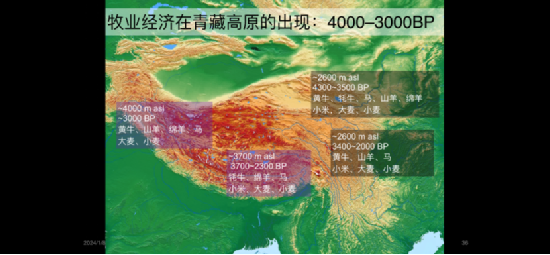
There are many cattle bone remains in the animal remains of the Bon-Gga site, which can be identified as two types: yak and yellow cattle. Further DNA identification revealed that there are hybrid species of yellow cattle and yak - dzo - in the Bon-Gga cattle herd. The transport capacity of dzo is better than that of yak and yellow cattle, and this hybridization may be the result of conscious human intervention. Through gene tracing, the speaker's team found that the Bon-Gga yellow cattle have a high degree of kinship and continuity with ordinary cattle in northern China. It is very likely that the yellow cattle in the Qinghai-Tibet Plateau were introduced from northern China, which implies deeper archaeological topics such as the migration of pastoral people. The speaker pointed out that future related explorations can focus on the changes in yak body size and the emergence of different breeds during the process of yak domestication on the Qinghai-Tibet Plateau. At the same time, it is more important to return to the archaeological and anthropological perspective, pay attention to the impact of yak domestication on human behavior and the multiple aspects of human use of yaks, and vigorously accumulate new data to further explore the macro issues of the domestication and spread of various types of cattle in the mountainous areas of southwestern China and the Qinghai-Tibet Plateau.
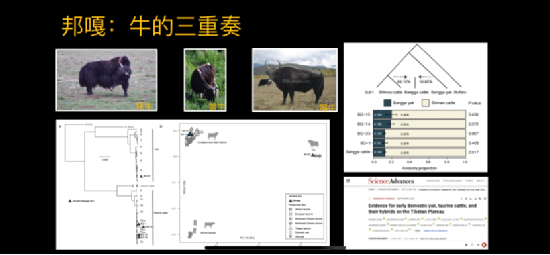
The cold environment of the Qinghai-Tibet Plateau not only brings survival challenges to humans, but also brings challenges to animals that originally lived at low altitudes. Archaeological discoveries show that the residents of the Bon-Gga site raised sheep as the main pastoral animals. The speaker used the research results of sheep bone remains from the Bon-Gga site to elaborate on the question of "how did ancient people help animals adapt to the Qinghai-Tibet Plateau."
By integrating livestock production data from multiple regions of the Qinghai-Tibet Plateau from historical periods to the 21st century, the speaker established a new model for sheep mortality patterns on the Qinghai-Tibet Plateau. The sheep mortality pattern of Bon-Gga best matches the curve of poor natural environment, and the analysis found that the mortality rate of Bon-Gga lambs (<1 year old) exceeds 60%, and the harsh natural environment leads to an excessive loss rate of Bon-Gga sheep. Combining the situation of other sites, it is preliminarily speculated that the high lamb mortality rate may be a major challenge generally faced by pastoralism on the Qinghai-Tibet Plateau, which may lead to slow growth of sheep flock size and seriously affect the sustainable development of pastoralism.
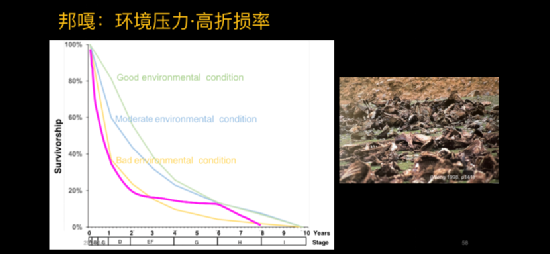
In order to explore the sheep flock management measures taken by the Bon-Gga people under such harsh natural conditions, the speaker used stable isotope analysis to detect the periodic changes in carbon and oxygen stable isotope values of sheep tooth enamel. The analysis results show that the seasonal changes in carbon stable isotope values of some ancient domestic sheep teeth in Bon-Gga are very small, indicating that the Bon-Gga sheep flock may have been fed all year round, and the sheep skeletons also show the pathological characteristics of captive breeding. The carbon isotope analysis results show that the ancient residents of Bon-Gga may have used some crops to feed the sheep flock, and may have also fed C4 plants. The relatively flat oxygen isotope curve may indicate that the drinking water of the sheep flock at the Bon-Gga site was also affected by ancient herders. It can be seen that in the face of the harsh natural environment, the residents of Bon-Gga paid attention to the management of the sheep flock, and may have kept the sheep flock in captivity and stored forage and drinking water to improve their ability to cope with risks.
At the end of this forum, Zhang Zhengwei summarized that the speech at this forum was only based on the current materials and research, and made a current explanation of the two questions of "how animals help ancient people adapt to the Qinghai-Tibet Plateau" and "how ancient people help animals adapt to the Qinghai-Tibet Plateau." There is still room for in-depth research on many issues. Finally, he also put forward more topics worthy of exploration from a broader perspective, calling for multi-disciplinary, multi-field cooperation and the use of various scientific and technological means and analysis methods to promote the next stage of animal archaeological research on the Qinghai-Tibet Plateau.
Mao Kangshan, Professor of the College of Life Sciences of Sichuan University, praised the interdisciplinary exchange atmosphere created by the Center for Archaeological Science in the comments, and fully discussed with Zhang Zhengwei the geographical distribution of ancient sites on the Qinghai-Tibet Plateau and the possibility of ancient people planting pasture on the plateau. Mao Kangshan especially proposed that when exploring ancient human behavior on the plateau, attention should be paid to accumulating and integrating high-precision ancient ecological change data on the plateau. Finally, Yuan Haibing, the host of the forum, encouraged the students participating in the forum to establish a sense of problem awareness in their studies, actively devote themselves to archaeology on the Qinghai-Tibet Plateau, and constantly explore deeper and broader academic issues. After the speech, the teachers and students at the scene raised questions related to the issues mentioned by Zhang Zhengwei, combined with their own research interests, and communicated with Zhang Zhengwei.
